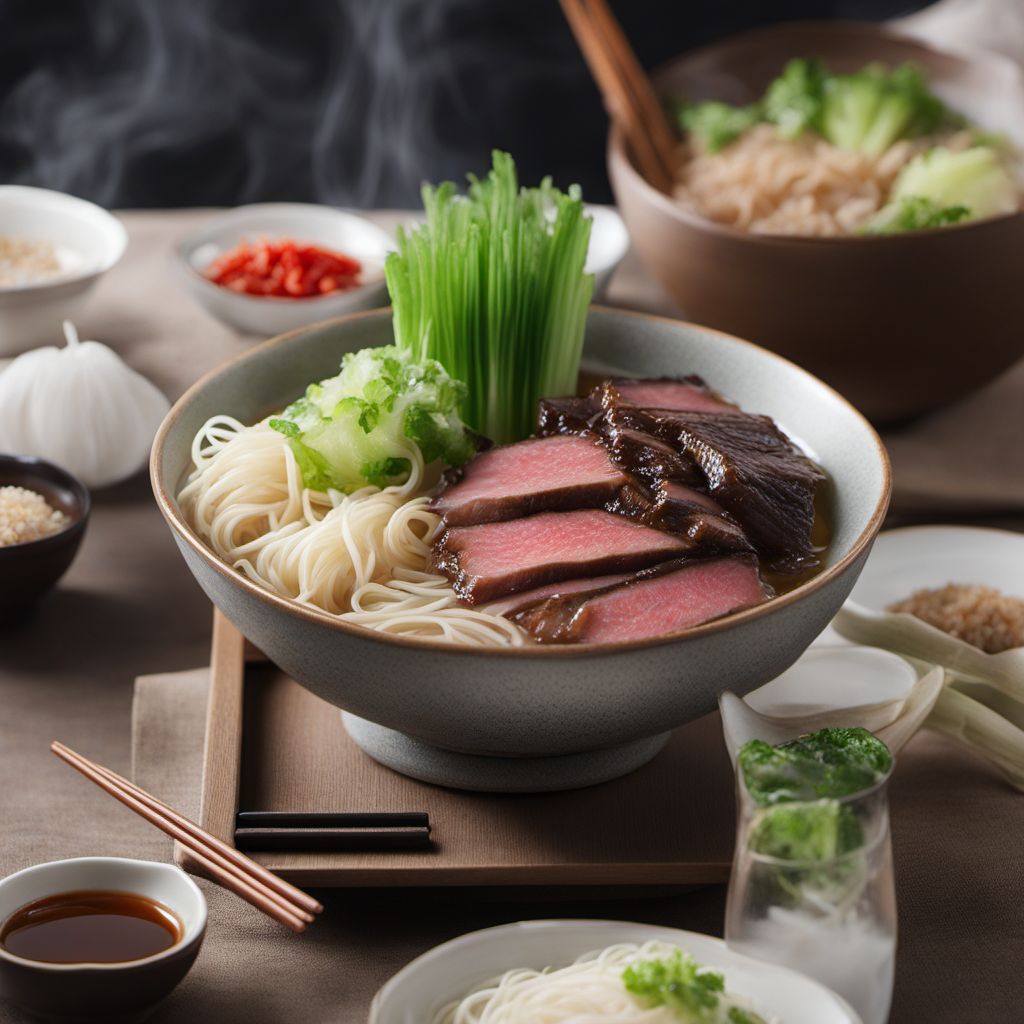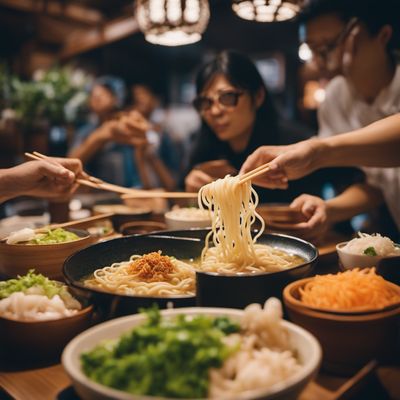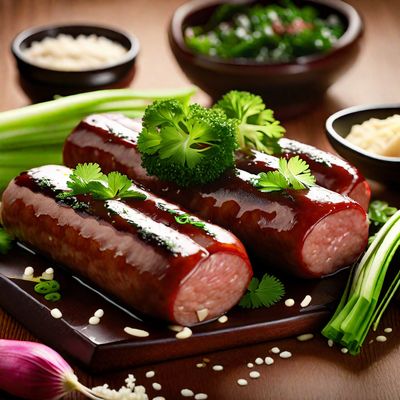
Recipe
Nabemono: Japanese Hot Pot Delight
Umami Infusion: A Flavorful Journey into Japanese Hot Pot Cuisine
4.8 out of 5
Indulge in the heartwarming tradition of Japanese cuisine with this authentic Nabemono recipe. This delightful hot pot dish brings together a variety of fresh ingredients, simmered in a flavorful broth, creating a communal dining experience that is both comforting and satisfying.
Metadata
Preparation time
20 minutes
Cooking time
30 minutes
Total time
50 minutes
Yields
4 servings
Preparation difficulty
Medium
Suitable for
Pescatarian, Gluten-free (using gluten-free soy sauce and noodles), Dairy-free, Low-carb (omit noodles), Nut-free
Allergens
Soy, Wheat (if using regular soy sauce and noodles)
Not suitable for
Vegan (due to the use of meat and fish-based broth), Paleo
Ingredients
-
500g (1.1 lb) thinly sliced beef or pork 500g (1.1 lb) thinly sliced beef or pork
-
200g (7 oz) firm tofu, cubed 200g (7 oz) firm tofu, cubed
-
200g (7 oz) shiitake mushrooms, sliced 200g (7 oz) shiitake mushrooms, sliced
-
1 Napa cabbage, sliced 1 Napa cabbage, sliced
-
2 carrots, thinly sliced 2 carrots, thinly sliced
-
1 daikon radish, thinly sliced 1 daikon radish, thinly sliced
-
4 green onions, chopped 4 green onions, chopped
-
200g (7 oz) udon noodles 200g (7 oz) udon noodles
-
4 cups (950ml) dashi broth (or vegetable broth for a vegetarian option) 4 cups (950ml) dashi broth (or vegetable broth for a vegetarian option)
-
1/4 cup (60ml) soy sauce 1/4 cup (60ml) soy sauce
-
2 tablespoons mirin 2 tablespoons mirin
-
2 tablespoons sake 2 tablespoons sake
-
1 tablespoon sesame oil 1 tablespoon sesame oil
-
Salt, to taste Salt, to taste
Nutrition
- Calories (kcal / KJ): 350 kcal / 1465 KJ
- Fat (total, saturated): 12g, 3g
- Carbohydrates (total, sugars): 25g, 5g
- Protein: 35g
- Fiber: 6g
- Salt: 2g
Preparation
-
1.In a large pot, bring the dashi broth to a simmer over medium heat.
-
2.Add the soy sauce, mirin, sake, and sesame oil to the broth. Stir well to combine.
-
3.Arrange the sliced beef or pork, tofu, shiitake mushrooms, Napa cabbage, carrots, daikon radish, and green onions on separate plates.
-
4.Allow each person to choose their desired ingredients and add them to the simmering broth.
-
5.Cook the ingredients in the broth until they are tender and cooked through.
-
6.Meanwhile, cook the udon noodles according to the package instructions. Drain and set aside.
-
7.Once the ingredients in the hot pot are cooked, season the broth with salt to taste.
-
8.Serve the hot pot alongside the cooked udon noodles.
-
9.Each person can take a bowl, fill it with their desired combination of ingredients and broth, and enjoy the flavorful Nabemono.
Treat your ingredients with care...
- Beef or pork — For the best results, choose thinly sliced cuts of meat, such as ribeye or pork loin. If you can't find pre-sliced meat, freeze it for about 30 minutes to make it easier to slice thinly.
- Tofu — Use firm tofu to prevent it from breaking apart during cooking. Pat it dry with a paper towel before cubing to remove excess moisture.
- Shiitake mushrooms — Remove the tough stems before slicing. If fresh shiitake mushrooms are not available, rehydrate dried shiitake mushrooms in warm water before slicing.
- Udon noodles — Cook the noodles separately and add them to individual bowls when serving to prevent them from becoming too soft in the hot pot.
Tips & Tricks
- To enhance the flavor of the broth, you can add a piece of kombu (dried kelp) or a handful of dried bonito flakes to the simmering broth.
- Customize your hot pot by offering a variety of dipping sauces such as ponzu sauce, sesame sauce, or spicy chili oil.
- Don't overcook the ingredients in the hot pot. They should be tender but still have a slight crunch to maintain their texture.
- Leftover hot pot can be transformed into a delicious soup by adding more broth and simmering it with additional vegetables and noodles.
Serving advice
Serve the hot pot with individual bowls, chopsticks, and spoons. Encourage guests to create their own unique combinations of ingredients and flavors.
Presentation advice
Present the hot pot in a large, decorative pot or a traditional Japanese donabe. Garnish with a sprinkle of chopped green onions or toasted sesame seeds for an added touch of freshness and visual appeal.
More recipes...
For Nabemono
More Japanese cuisine dishes » Browse all

Ise udon
Thick Noodles in Broth
Ise udon is a Japanese noodle dish that is made with udon noodles and a variety of toppings. It is a hearty and flavorful dish that is perfect for...

Agemono
Deep Fried Dish
Agemono is a Japanese cooking technique in which foods are deep-fried in oil until crispy and golden brown. The word "agemono" means "deep-fried"...

Nizakana
Boiled Fish
Nizakana is a traditional Japanese dish that involves grilling or broiling fish and serving it with a soy sauce-based marinade.





